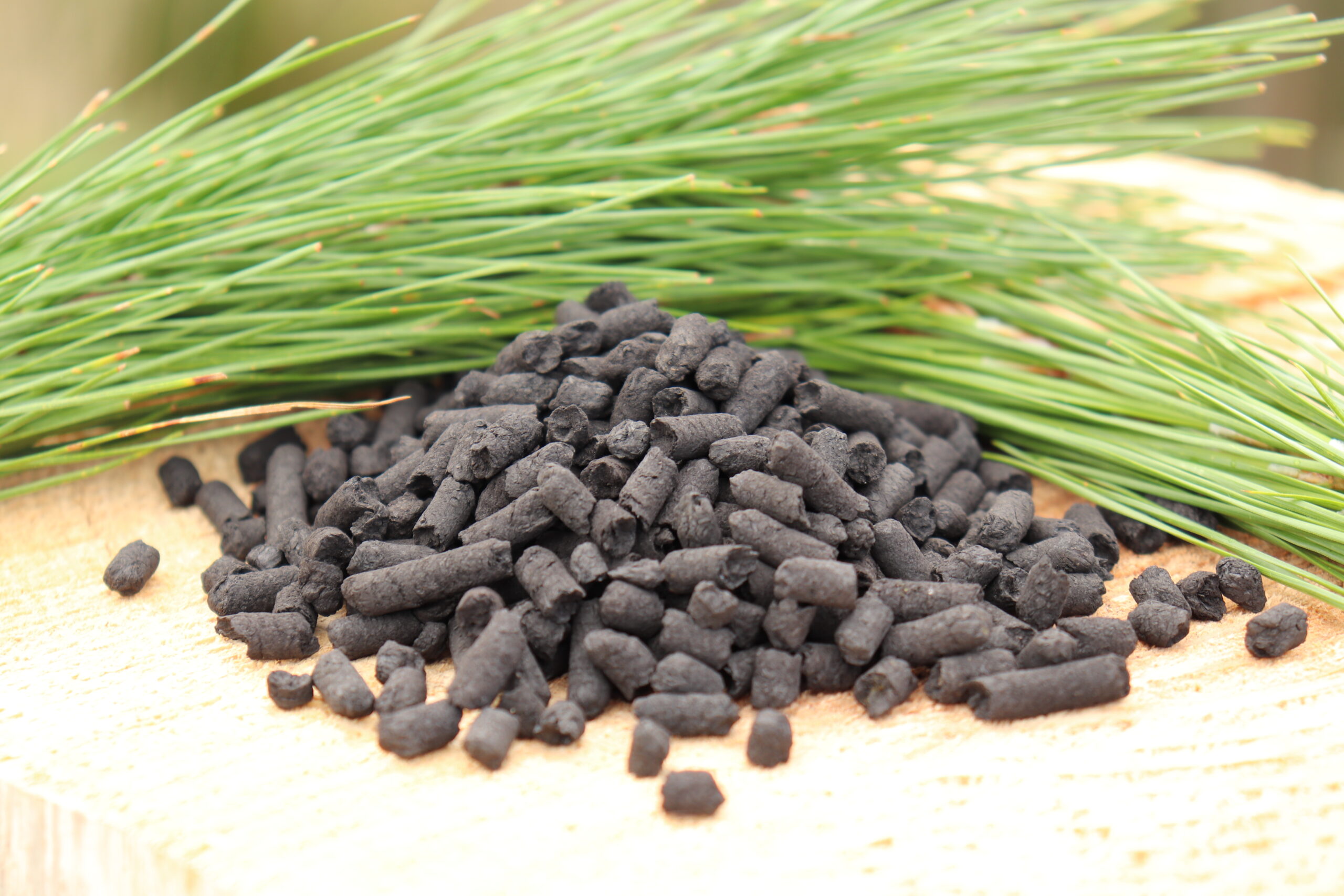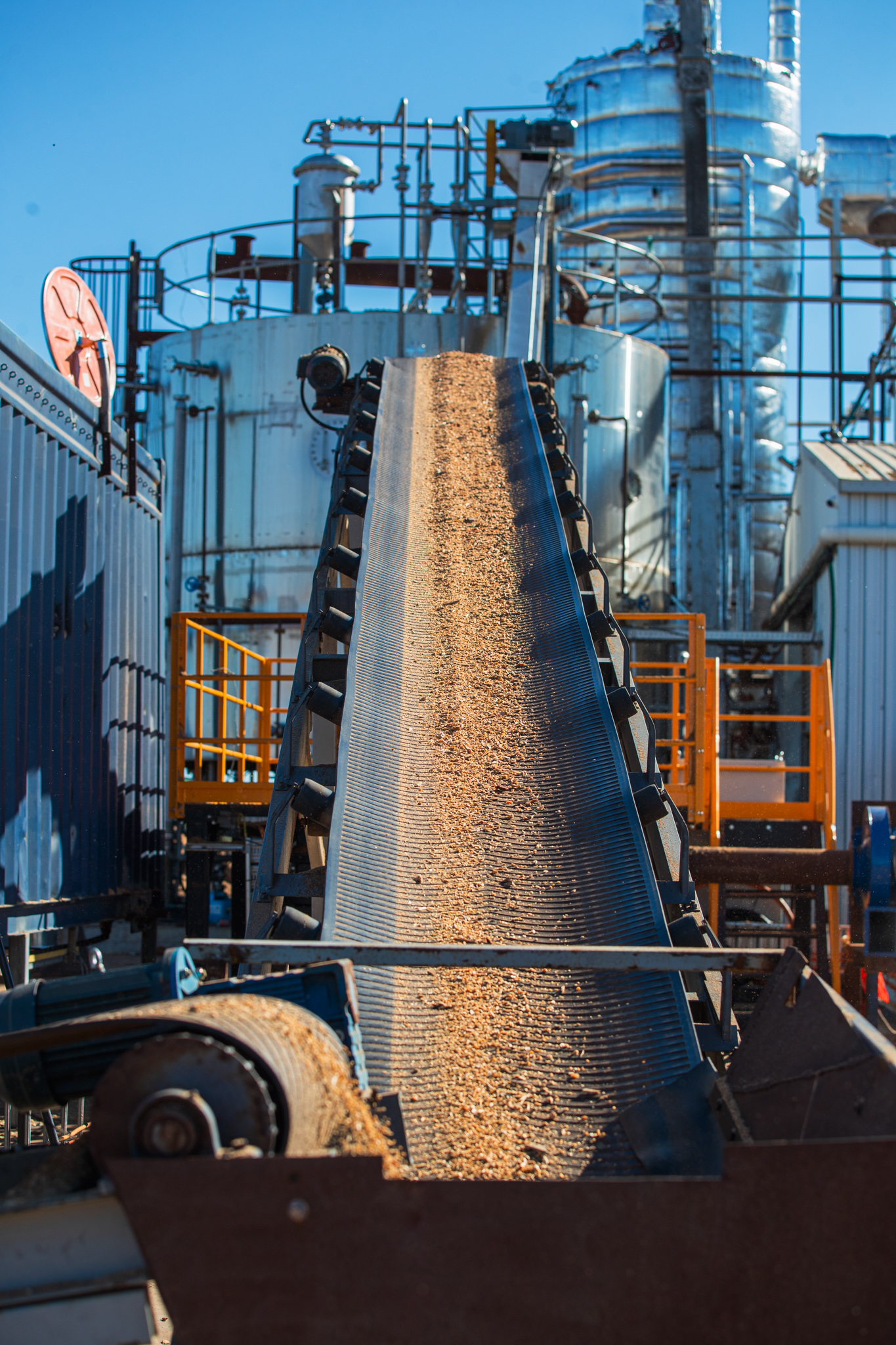We welcome your enquiry
We take great pride in everything that we do, control over products and supply allows us to ensure our customers receive the best quality service. Contact us via the form below or on the following email [email protected] to register your enquiry with us.
Pine Gold Rush: From Rosin and Terpenes to Invaluable Alternatives, Transforming Industries and Phasing Out Petroleum Dependence
13 02 2024Pine trees, cultivated globally, are a versatile resource for various products. Beyond providing timber and cellulose for paper production, pine trees yield oleoresin, from which an array of chemical products is extracted. Notably, the naval stores industry extracts turpentine and rosin from oleoresin, forming the foundation for numerous chemical feedstocks. This industry constitutes a significant multibillion-dollar sector. Its significance is growing as it offers a sustainable alternative to replace petroleum-derived chemicals and fuels, contributing to carbon dioxide fixation. Additionally, pine forests play a role in mitigating the greenhouse effect. 1, 2
Rosin:
Rosin, or colophony, is a solid and brittle amalgamation of non-volatile resin components from conifer trees. It exhibits a spectrum of colours, ranging from nearly colourless to shades of yellow, brown, and black. Two commercially significant types of rosin, namely gum rosin and tall oil rosin, can be distinguished based on their origin. Gum rosin is the residual non-volatile substance obtained after distilling tree resin collected. Tall oil rosin, on the other hand, is a by-product derived from wood pulping in the kraft process. Approximately 60% of global rosin production is attributed to gum rosin, while tall oil rosin contributes around 35%. The price of rosin fluctuated between 300 and 2750 USD/ton in the first half of 20183, depending on factors such as origin, supplier, and colour. The annual worldwide production of rosin stands at approximately 1.2 million tons, and this output has remained stable in recent decades. 3, 4
The 2022 Global Gum Rosin Market reached a valuation of USD 1.56 Billion and is projected to exceed USD 2.34 Billion by 2031, with a compound annual growth rate (CAGR) of 4.6% during the forecast period from 2023 to 2031. This market expansion is driven by the increasing adoption of gum rosin across diverse industrial applications. Gum rosin, a bio-based material, consists of various rosin acids and is the solid state of pine oleoresin primarily sourced from pine trees. The increasing demand for gum rosin is driven by the growing requirement for high-quality intermediates essential in automotive and construction applications, particularly in the production of adhesives, rubber, and coatings. Adhesives formulated with gum rosin resins provide enhanced characteristics, including superior hot tack, thermal stability, exceptional durability, and increased polarity. Moreover, gum rosins are effective softening agents in rubber manufacturing, contributing to improved elasticity, cohesion, and surface finish. 5
Rosin mainly consists of different resin acids, especially abietic acid, with the general formula of C20H30O2. Several resin acids have been identified primarily based on a few diterpene carbon skeletons. Among these, the most prevalent resin acids are constructed on abietane and pimarane skeletons (See Figure 1). It is crucial to highlight that abietane-structured acids feature conjugated double-bond systems, rendering them notably prone to chemical modifications. Notably, abietane-structured acids undergo isomerisation at elevated temperatures, transforming into readily reactive levopimaric acid. In contrast, pimarane-type acids lack conjugated double-bond systems, restricting their chemical processability. The precise chemical composition of rosin depends on its type (gum, tall oil, or wood), thermal history, tree species, and geographical origin. 6
The chemical composition of rosin positions it as one of the most abundant chemicals employed in producing films, coatings, and adhesives. 7, 8, 9, 10 Its versatile applications extend to biomedical uses11, 12, 13, 14, 15, 16, as well as applications in mining, metallurgy, and construction17, 18, 19, and as a filler20, 21, 22. Furthermore, the potential for chemical modification of rosin opens up numerous possibilities for expanding its utilisation as a raw material.
As mentioned, Rosin can replace the petroleum-based intermediate to produce valuable products such as epoxy resin. The study of epoxy resin chemistry stands as a crucial aspect within the realm of polymers. Nonetheless, the petroleum-based nature of traditional epoxy resins, coupled with the ongoing depletion of oil resources, has spurred scientific endeavours towards developing bio-based epoxy resins. The imperative to create environmentally sustainable materials has grown progressively, emphasising the significance of exploring alternative sources.
In response to this need, researchers have turned their attention to bio-based materials, with rosin emerging as a prominent contender. As the second-largest renewable source, rosin’s chemical structure aligns seamlessly with epoxy, establishing it as the most widely utilised bio-epoxy resin. This shift towards bio-based epoxy addresses environmental concerns and underscores the growing demand for sustainable materials in today’s dynamic landscape. 23, 24, 25
Rosin-derived resins and monomers encompass compounds featuring epoxy, acrylic, allyl, hydroxyl, or oxazine reactive groups, facilitating cross-linking, polymerisation, or integration into the polymer matrix. The procedures for their preparation are typically well-documented and straightforward. While their syntheses mirror those of conventional resins/monomers, the drawback lies in the frequent requirement for organic solvents in several reactions, posing a challenge in adhering to Green Chemistry principles.
However, the versatility of rosin derivatives compensates for this limitation, enabling the formulation of resins and monomers with diverse and customisable properties. These materials can be tailored to exhibit adjustable glass transition temperatures, minimal volume shrinkage, and enhancements in elastic modulus, Young’s modulus, shape-memory capabilities, flame retardancy, and corrosion protection compared to their petroleum-based counterparts. Consequently, meticulously described formulations demonstrate significant commercialisation potential in resins, adhesives, and paints. Yet, further applied research is essential in many instances to elevate their technology readiness level (TRL).
As another example, hardeners derived from rosin, specifically curing agents, are compounds characterised by anhydride, carboxyl, or hydroxyl groups, making them suitable for application in epoxy or urethane resin systems. Compared to their petroleum-based counterparts, these rosin-based hardeners impart enhanced durability and thermal properties to resin systems. Additionally, rosin-based anhydrides offer the advantage of being non-toxic, a notable contrast to conventional anhydride curing agents.
The preparation of rosin-based hardeners is uncomplicated, well-documented, and typically does not necessitate solvents. These attributes have generated significant interest in using rosin-based chemicals as hardeners for conventional and bio-based resins. This interest has led to various commercial applications, including successfully commercialising maleated rosins.
Small to medium-sized molecule rosin-based surfactants represent another valuable product derived from rosin. These ionic or non-ionic surfactants play a role in reducing surface tension between different substances. In contrast to their petrochemical counterparts, they stand out for their customisable surface activity, affinity to various chemicals (particularly cycloaliphatic and aromatic compounds), non-toxic nature, mild biocidal properties, and heightened thermal stability.
Recent studies6, 26 highlight that resins, monomers, hardeners, and biologically active compounds are the most thoroughly documented categories of rosin-based chemicals over the past decade. This comprehensive understanding positions them as the most promising candidates for scaling up and commercialisation efforts. Nevertheless, it is crucial to recognise that rosin chemistry holds the potential to yield a substantial array of new environmentally friendly solutions across various domains of science, medicine, and engineering.
Terpenes:
Terpenes, alternatively recognised as isoprenoids, represent the most extensive and diverse category of naturally occurring compounds. While predominantly present in plants, larger subclasses of terpenes, including sterols and squalene, are also identified in animals. These compounds play a pivotal role in contributing to various plant species’ fragrance, taste, and pigmentation. For numerous decades, terpene resins have found applications in pressure-sensitive adhesives, hot-melt adhesives, sealants, and coatings. The production of terpene resins typically involves the cationic polymerisation of terpene monomers.
Terpenoids constitute a specialised subset within the broader terpene family, distinguished by a range of functional groups and the relocation or elimination of an oxidised methyl group. Classification of these compounds is based on the count of carbon units, resulting in monoterpenes, sesquiterpenes, diterpenes, sesterpenes, and triterpenes. The volatile fraction found in pine resin, known as turpentine, comprises a blend of terpenes. These compounds share isoprene (2-methyl-1,4-butadiene) as a common carbon skeleton building block and are further classified based on the number of units. 27, 28
The surge in global demand for renewable and biodegradable plastics, often called “green plastics,” stems from growing environmental concerns and the finite nature of fossil fuel resources. Terpenoids, such as β-pinene, have emerged as noteworthy precursors for substituted ε-caprolactones. 29 This discovery holds particular significance from a sustainability perspective, considering that caprolactone, a conventional precursor for green plastic polymer synthesis, is typically derived from crude oil. 30
The utilisation of renewable resources in polymer production is rising, with a notable focus on terpene monomers. These monomers serve as valuable raw materials for manufacturing diverse products.
An illustrative instance is turpentine, comprising α-pinene, β-pinene31 and trace amounts of other monoterpenes like limonene. Currently, thermoplastic elastomers, primarily sourced from petrochemicals, find applications in diverse fields such as car suspension systems, window seals, coatings for household or electronic products, shoe soles, medical devices, and asphalt. 32
Bolton et al. 32 showcases the incorporation of two pinene-derived monomers, namely α-methyl-p-methylstyrene and myrcene, into ABA tri-block copolymers (PAMMSb- PMYR-b-PAMMS). The resulting renewable thermoplastic elastomers exhibit several noteworthy properties, including tensile strengths reaching up to 10 MPa, remarkable low energy loss recovery characteristics, and elongation capacities up to 1300%. Furthermore, these renewable elastomers outperform their conventional petroleum-derived styrenic counterparts at higher temperatures, making them valuable for operations requiring elevated temperatures.
References:
(1) Rodrigues‐Corrêa, K. C. d. S.; de Lima, J. C.; Fett‐Neto, A. G. Pine oleoresin: tapping green chemicals, biofuels, food protection, and carbon sequestration from multipurpose trees. Food and Energy Security 2012, 1 (2), 81-93.
(2) Ramawat, K. G.; Mérillon, J.-M. Natural products; Springer-Verlag Berlin Heidelberg, 2013.
(3) Global Rosin Market-World Rosin Market Size, T., Analysis and Segment Forecasts to 2022-Rosin; Industry Research, O., Application, Product, Share, Growth, Key Opportunities, Dynamics, Analysis,; Rosin Report-Grand View Research, I. (accessed 2018 29 May 2018).
(4) Ma, S.; Li, T.; Liu, X.; Zhu, J. Research progress on bio-based thermosetting resins. Polymer International 2016, 65 (2), 164-173. DOI: https://doi.org/10.1002/pi.5027.
(5) Insite, F. B. Gum Rosin Market https://www.fortunebusinessinsights.com/gum-rosin-market-107640 (accessed 31 Januery 2024).
(6) Kugler, S.; Ossowicz, P.; Malarczyk-Matusiak, K.; Wierzbicka, E. Advances in Rosin-Based Chemicals: The Latest Recipes, Applications and Future Trends. Molecules 2019, 24 (9), 1651.
(7) Nguyen, T. T. H.; Li, S.; Li, J.; Liang, T. Micro-distribution and fixation of a rosin-based micronized-copper preservative in poplar wood. International Biodeterioration & Biodegradation 2013, 83, 63-70. DOI: https://doi.org/10.1016/j.ibiod.2013.02.017.
(8) Yousaf, B.; Liu, G.; Abbas, Q.; Wang, R.; Ullah, H.; Mian, M. M.; Amina; Rashid, A. Enhanced removal of hexavalent chromium from aqueous media using a highly stable and magnetically separable rosin-biochar-coated TiO2@C nanocomposite. RSC Advances 2018, 8 (46), 25983-25996, 10.1039/C8RA02860E. DOI: 10.1039/C8RA02860E.
(9) Zhang, Z.; Du, J.; Zhang, D.; Sun, H.; Yin, L.; Ma, L.; Chen, J.; Ma, D.; Cheng, H.-M.; Ren, W. Rosin-enabled ultraclean and damage-free transfer of graphene for large-area flexible organic light-emitting diodes. Nature Communications 2017, 8 (1), 14560. DOI: 10.1038/ncomms14560.
(10) Yu, X.; Bian, P.; Xue, Y.; Qian, X.; Yu, H.; Chen, W.; Hu, X.; Wang, P.; Wu, D.; Duan, Q.; et al. Combination of microsized mineral particles and rosin as a basis for converting cellulosic fibers into “sticky” superhydrophobic paper. Carbohydrate Polymers 2017, 174, 95-102. DOI: https://doi.org/10.1016/j.carbpol.2017.06.038.
(11) Singh, V.; Joshi, S.; Malviya, T. Carboxymethyl cellulose-rosin gum hybrid nanoparticles: An efficient drug carrier. International Journal of Biological Macromolecules 2018, 112, 390-398. DOI: https://doi.org/10.1016/j.ijbiomac.2018.01.184.
(12) Varshosaz, J.; Javanmard, S. H.; Soghrati, S.; Behdadfar, B. Magnetic chondroitin targeted nanoparticles for dual targeting of montelukast in prevention of in-stent restenosis. RSC Advances 2016, 6 (15), 12337-12347, 10.1039/C5RA20966H. DOI: 10.1039/C5RA20966H.
(13) Pomin, S. P.; de Lima, I. A.; Pezarini, R. R.; Cavalcanti, O. A. Evaluation of Rosin Gum and Eudragit® RS PO as a Functional Film Coating Material. AAPS PharmSciTech 2017, 18 (8), 2854-2861. DOI: 10.1208/s12249-017-0766-5.
(14) Moustafa, H.; El Kissi, N.; Abou-Kandil, A. I.; Abdel-Aziz, M. S.; Dufresne, A. PLA/PBAT Bionanocomposites with Antimicrobial Natural Rosin for Green Packaging. ACS Applied Materials & Interfaces 2017, 9 (23), 20132-20141. DOI: 10.1021/acsami.7b05557.
(15) Sharma, L.; Singh, C. Composite film developed from the blends of sesame protein isolate and gum rosin and their properties thereof. Polymer Composites 2018, 39 (5), 1480-1487. DOI: https://doi.org/10.1002/pc.24088.
(16) Sakamoto, K.; Suzuki, Y.; Yamamura, H.; Ohya, S.; Muraki, K.; Imaizumi, Y. Molecular mechanisms underlying pimaric acid-induced modulation of voltage-gated K+ channels. Journal of Pharmacological Sciences 2017, 133 (4), 223-231. DOI: https://doi.org/10.1016/j.jphs.2017.02.013.
(17) Filippov, L. O.; Foucaud, Y.; Filippova, I. V.; Badawi, M. New reagent formulations for selective flotation of scheelite from a skarn ore with complex calcium minerals gangue. Minerals Engineering 2018, 123, 85-94. DOI: https://doi.org/10.1016/j.mineng.2018.05.001.
(18) Peng, H.; Shan, X.; Kang, J.; Ling, X.; Wang, D. Influence of rotary disk configurations on droplets characteristics in molten slag granulation for waste heat recovery. Applied Thermal Engineering 2018, 135, 269-279. DOI: https://doi.org/10.1016/j.applthermaleng.2018.02.063.
(19) Huang, F.; Li, H.; Yi, Z.; Wang, Z.; Xie, Y. The rheological properties of self-compacting concrete containing superplasticizer and air-entraining agent. Construction and Building Materials 2018, 166, 833-838. DOI: https://doi.org/10.1016/j.conbuildmat.2018.01.169.
(20) Patel, V. K.; Rawat, N. Physico-mechanical properties of sustainable Sagwan-Teak Wood Flour/Polyester Composites with/without gum rosin. Sustainable Materials and Technologies 2017, 13, 1-8. DOI: https://doi.org/10.1016/j.susmat.2017.05.002.
(21) Li, X.; Ge, S.; Yang, J.; Chang, R.; Liang, C.; Xiong, L.; Zhao, M.; Li, M.; Sun, Q. Synthesis and study the properties of StNPs/gum nanoparticles for salvianolic acid B-oral delivery system. Food Chemistry 2017, 229, 111-119. DOI: https://doi.org/10.1016/j.foodchem.2017.02.059.
(22) Domene-López, D.; Guillén, M. M.; Martin-Gullon, I.; García-Quesada, J. C.; Montalbán, M. G. Study of the behavior of biodegradable starch/polyvinyl alcohol/rosin blends. Carbohydrate Polymers 2018, 202, 299-305. DOI: https://doi.org/10.1016/j.carbpol.2018.08.137.
(23) Gökhan, D.; Murat, K.; Mustafa, Ö.; Abuzer, A.; Bülent, A.; Mehmet, A. K. A bio-based epoxy resin from rosin powder with improved mechanical performance. Emerging Materials Research 2020, 9 (4), 1076-1081. DOI: 10.1680/jemmr.20.00001.
(24) El-Ghazawy, R. A.; El-Saeed, A. M.; Al-Shafey, H. I.; Abdul-Raheim, A.-R. M.; El-Sockary, M. A. Rosin based epoxy coating: Synthesis, identification and characterization. European Polymer Journal 2015, 69, 403-415. DOI: https://doi.org/10.1016/j.eurpolymj.2015.06.025.
(25) Deng, L.; Wang, Z.; Qu, B.; Liu, Y.; Qiu, W.; Qi, S. A Comparative Study on the Properties of Rosin-Based Epoxy Resins with Different Flexible Chains. Polymers 2023, 15 (21), 4246.
(26) Acosta, A. P.; Barbosa, K. T.; Amico, S. C.; Missio, A. L.; de Avila Delucis, R.; Gatto, D. A. Improvement in mechanical, physical and biological properties of eucalyptus and pine woods by raw pine resin in situ polymerization. Industrial Crops and Products 2021, 166, 113495. DOI: https://doi.org/10.1016/j.indcrop.2021.113495.
(27) Neis, F. A.; de Costa, F.; de Araújo, A. T.; Fett, J. P.; Fett-Neto, A. G. Multiple industrial uses of non-wood pine products. Industrial Crops and Products 2019, 130, 248-258. DOI: https://doi.org/10.1016/j.indcrop.2018.12.088.
(28) Gandini, A. The irruption of polymers from renewable resources on the scene of macromolecular science and technology. Green Chemistry 2011, 13 (5), 1061-1083, 10.1039/C0GC00789G. DOI: 10.1039/C0GC00789G.
(29) Quilter, H. C.; Hutchby, M.; Davidson, M. G.; Jones, M. D. Polymerisation of a terpene-derived lactone: a bio-based alternative to ε-caprolactone. Polymer Chemistry 2017, 8 (5), 833-837, 10.1039/C6PY02033J. DOI: 10.1039/C6PY02033J.
(30) Schmidt, S.; Scherkus, C.; Muschiol, J.; Menyes, U.; Winkler, T.; Hummel, W.; Gröger, H.; Liese, A.; Herz, H.-G.; Bornscheuer, U. T. An Enzyme Cascade Synthesis of ε-Caprolactone and its Oligomers. Angewandte Chemie International Edition 2015, 54 (9), 2784-2787. DOI: https://doi.org/10.1002/anie.201410633.
(31) Gandini, A.; Lacerda, T. M. From monomers to polymers from renewable resources: Recent advances. Progress in Polymer Science 2015, 48, 1-39. DOI: https://doi.org/10.1016/j.progpolymsci.2014.11.002.
(32) Bolton, J. M.; Hillmyer, M. A.; Hoye, T. R. Sustainable Thermoplastic Elastomers from Terpene-Derived Monomers. ACS Macro Letters 2014, 3 (8), 717-720. DOI: 10.1021/mz500339h.
Latest News































